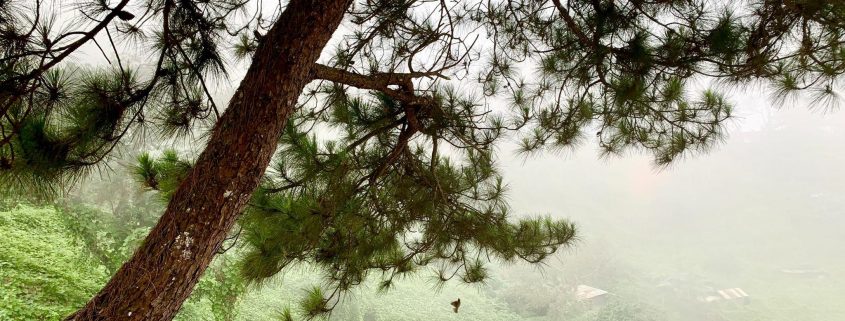10 Top Factors that can Kill Your Tree
Trees offer many benefits not just to the environment but to their owners as well. While you strive to keep your trees healthy, some factors unknowingly contribute to their harm. Read through the list below and see if you have been practising any of them.
Top Factors that can Kill Your Tree
1. Too Much Staking
Understandably, you want to give your tree some support, especially when they are leaning towards the road or your neighbour’s yard. You have to remember, however, that trees need support for just a short period.
If you prolong the staking or guying, it may cause damage to the tree. It may cause the tree to become top-heavy. In some cases, it can also cause irregular trunk growth and girdling. You may ask the tree experts near you on the proper staking and for how long the guying should be.
2. Improper Pruning
Tree pruning is essential if you want your tree to grow healthier and more beautiful. If you are not familiar with the proper trimming techniques, it may be best to consult a professional tree service provider.
Improper pruning of the tree can lead to damage or death of the tree. In some cases, it may also cause infestation, especially when the tree begins to show signs of decaying.
3. Unwarranted Infestations
Pests can be categorised according to the impact they make on trees. Some pests are beneficial while some are dangerous for the tree. Other pests are considered casual feeders which do not cause serious damage.
The growth of fungi on the tree trunk may cause superficial damage to the tree but others endanger the tree by sipping through their nutrients. You will notice that the tree’s overall appearance and health will slowly deteriorate as these pests thrive on them.
At the first sign of infestation, it may be best to contact your tree service provider. They can check on your tree and provide the best recommendation to rid of the pests that are adversely affecting the health of your tree.
4. Using Screws or Nails
The tree is a pretty good place to hang that birdhouse or signage that says “do not climb.” The thing is, using screws to fasten your birdhouse or nails to hang your signage can impact the tree’s health.
When these screws and nails penetrate the bark, it makes the tree vulnerable to diseases and infestations. Another disadvantage to using screws and nails is that the tree may grow around them which may cause an accident in case you decide to cut or trim the tree later on.
5. Over Fertilisation
Fertilisation should be carefully done. It is highly recommended to use the right type and amount of fertiliser. You may consult your tree expert about the right way of fertilising and when is the perfect time to fertilise.
Over fertilisation can lead to many problems, like rotting of the roots, causing burnt tree bark and unhealthy growth. In some cases, it can also affect the soil leading to the decaying of the tree. Generally, a soil-injected slow-release fertiliser can be a good choice for tree fertilisation.
6. Poor Soil Condition
Trees also get nutrients from the soil and if it lacks moisture and minerals, it can affect the health of the tree. When this happens it can inhibit the growth of the roots and other parts of the tree. When the poor condition of the soil is neglected, it can result in the deterioration of the tree’s health and growth.
7. Building Over Tree Roots
Trees are a good source of shade for humans and animals but it is not advisable to build a dog house or anything under the tree or over its roots. It can hamper its growth and may cause infestation. Remember that tree’s main source of sustenance is its roots. When the root is damaged, it may cause the deterioration or death of the tree.
8. Wounding the Tree Bark
The tree bark is similar to the human epidermis. Since the outer skin covers and protects the human body, the bark also works as covering and protection to the tree’s trunk and branches. It shelters and guards the tree against outside harm.
When the tree bark is wounded, it renders an opportunity for tree diseases and infestation. It can become a breeding ground for pests and insects. Wounding the tree bark also exposes the inner layers of the trunk that hold the tree’s moisture, hence, decreasing the tree’s water deposits. This, then, may result in the tree’s slow death.
9. Lack of Monitoring After a Transplant
Young trees that are planted near each other must be transferred to a wider ground area. This aims to help the tree thrive better by giving its roots and trunk more room to grow abundantly. Just make sure that you monitor the growth and health of the tree after transplanting it.
Some trees tend to lose their vigour when planted somewhere else. It can be challenging for their roots to get the right balance of soil moisture, hence, they end up wilting.
10. Putting Too Much Mulch
Mulch offers many benefits for the tree and other plants. It can help prevent the growth of unwanted weeds or retain moisture in the soil for the tree or plant’s sustenance. Putting too much mulch near the tree’s trunk, however, can suffocate it. It is highly recommended to keep the mulch 15 to 30 centimetres away from the tree trunk.
These are just ten factors that you need to watch out for as they may impact the health and growth of your tree. When you are unsure of how to care for your tree, seek the help of tree experts.
Call Henshaws Tree Service for more information!








Leave a Reply
Want to join the discussion?Feel free to contribute!